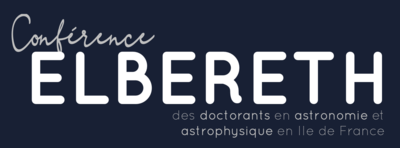Orateur
Description
Despite the challenge of directly imaging exoplanets, we are seeing, thanks to instruments like JWST/NirSpec, ESO/CRIRES+ and ESO/HiRISE, the advent of high-spectral resolution observations tragetting wide-orbit gas giants; these Rosetta stones of planetary processes render the field mature to advance studies aimed at unveiling the atmospheric composition, orbital characteristics, chemistry, formation and evolution of exoplanets. To this end, the community is devising new multidimensional grids of simulated spectra, including the high-spectral resolution (R=200,000) model I have been developing: these are an updated, high-resolution version of the Exo-REM [1] 1-D radiative-convective model, with C/O ratio values, surface gravity, metallicity and effective temperature as model parameters. Exo-REM, so far only existing at low to medium resolutions, has been shown to robustly reproduce the L-T transition thanks to its inclusion of clouds and non-equilibrium chemistry. At high resolutions, this model allows us to unlock a myriad of information such as atmospheric abundances, surface gravity and vsin(i), which are poorly constrained with lower resolutions. The grids emerging from this model are state-of-the-art, as they incorporate the most up-to-date line lists and isotopologue abundances, which is key at these high resolutions. These allow us to carry out forward modelling on specific targets, most notably the elusive Af lep b. I will be presenting new results emerging from this such as evidence for the presence of H2O and CH4 in its atmosphere, and a value of C/O ratio, an important tracer for the type of planetary formation it underwent. With the impending bridge of the gap between directly imageable planets and those with closer orbits, we may hope to someday use such models on smaller and cooler planets, thus contributing to a deeper knowledge of the formation pathways for a wide variety of planets.
[1] “A Self-consistent Cloud Model for Brown Dwarfs and Young Giant Exoplanets: Comparison with Photometric and Spectroscopic Observations”, Charnay et al. 2018
| Astrophysics Field | exoplanets, modelling, atmospheres |
|---|

